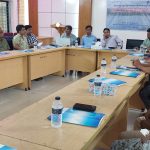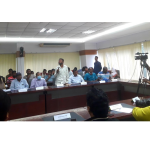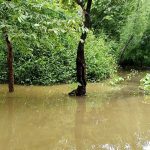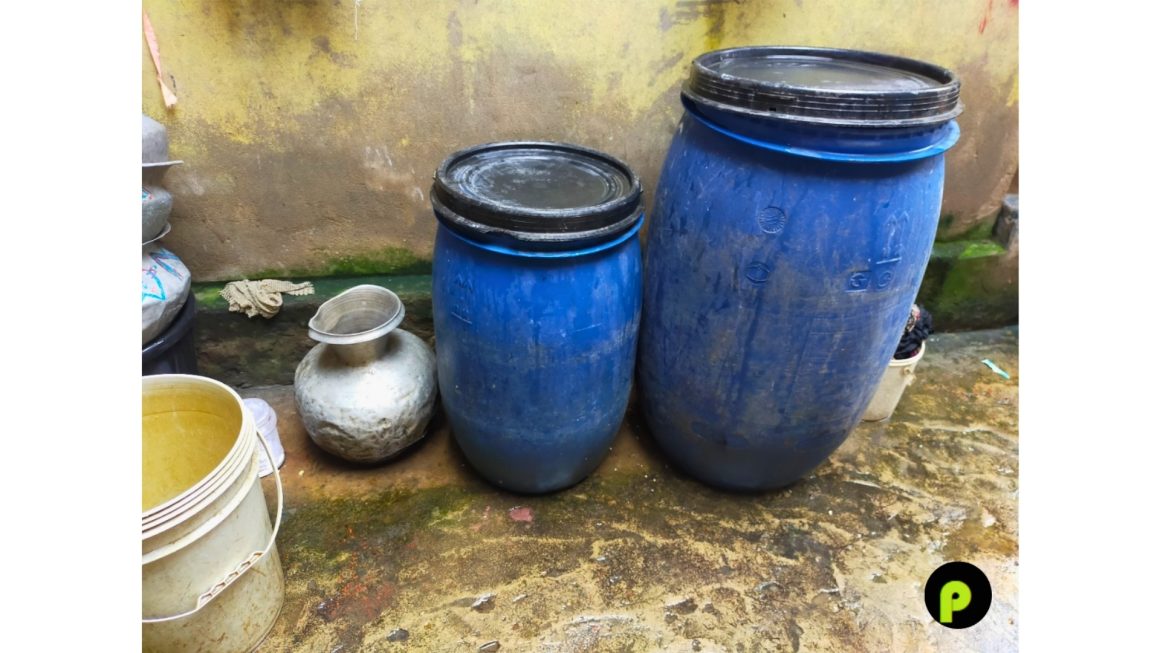"This locally-led adaptation could be a solution for more communities but lacks support from governments."
“When it rains, it’s thrilling to us like a festival,” Adori Rani Das, a widow with three children, said as she described the lack of fresh water in her community on the coast of Bangladesh.
�
“The freshwater crisis makes our life horrible. Sometimes I drink less to save (water) for the coming days,” Rani said as she sliced vegetables for lunch in her same-pucca house in Jelepara, a fishing community in the northern Katghar area of Chittagong District.
�
“We have to buy water for cooking and drinking,” she said, adding that a gallon of drinkable water costs 60 BDT (US0.60).
�
“We wash the rice and vegetables primarily with saline water and then wash with fresh water before cooking,” Rani said, adding the process is common among most families in the area to save purchased water for cooking and drinking.
�
Global warming and rising sea levels are having severe impacts on the coast of Bangladesh, leading to more intense storms during the monsoon season and increasing levels of water salinity which puts pressure on freshwater resources in coastal communities like Jelepara.Better watershed management is needed to protect and improve the quality and storage of water and strengthen the resilience of communities. However, the lack of action by national authorities has prompted local communities to come up with their adaptation to the impacts of climate change.
�
The rising salinity of Bangladesh’s freshwater supply poses a major water security threat for millions of people living along the coast, experts say. What has long been a problem in the southwest districts of Bangladesh is now gradually impacting the northern parts of the country.
�
A 2017 study by the Soil Resources Development Institute found that salinity levels in rivers near the Bay of Bengal have increased significantly, and linger for longer.Soil salinity increased over 10 years (2005-2015) from 7.6 to 15.9 parts per thousand (ppt), compared to an acceptable level of 0.4 to 1.8 ppt, according to the study by the SRDI, which is part of the Ministry of Agriculture.
�
Another study by the Centre for Environmental and Geographical Information Service (CEGIS), a subsidiary of Bangladesh’s water resources ministry, measured the average extent of seawater intrusion in coastal areas and classified it into three sections.The Assessment of Sea Level Rise and Vulnerability in the Coastal Zone of Bangladesh through Trend Analysis — is based on 30 years of data. It found that, on average, seawater intrusion in the Ganges tidal floodplain is 7-8mm per year; in the Meghna estuarine floodplain 6-9mm per year; and along the Chittagong coastal plan 11-20mm per year. �
�
Experts say saltwater intrusion can be linked to a combination of the impacts ofclimate change and a lowering of the groundwater table.“Both phenomena work synergistically,” Dr. Reaz Akter Mullick, a professor in the Department of Civil Engineering at Chittagong University of Engineering and Technology (CUET).
�
PUBLIC HEALTH AT RISK
The salinity of groundwater in most coastal districts is several levels above the acceptable level for safe drinkable water recommended by the World Health Organization (WHO), according to a study by Bangladesh’s Department of Public Health and Engineering (DPHE).
�
The study found that in most coastal areas, the level of salinity (chloride count) in the main or secondary aquifer ranged from 103 to 12,433 milligrams/liter during the dry months and 34 to 11,366 milligrams/liter in the rainy season.
�
In both cases, the extremes are far above the prescribed 300 milligrams/liter for freshwater and the drinkable range of 300-600 milligrams/liter.
�
The most serious health impacts in coastal areas affected by high salinity are felt by teenage girls and women. For example, the lack of fresh water can lead to menstrual hygiene problems. Rani had experienced infections and itching during her monthly period and her physician prescribed the use of fresh water. But Rani said that was difficult to secure.
�
“I have to suffer from pain every month,” Rani said, adding that her gynecologist prescribed a medicine to help relieve her pain that cost about 100 BDT a month.
�
Rani’s experience is shared by many women and men living in coastal areas with high salinity levels who suffer from skin diseases, high blood pressure, and insomnia.
�
Hygiene is a key factor in women’s health, particularly for those from poor families who rely on reusing old rags during menstruation, said Shahana Akther, Head of the Gynecologist Department at Chattogram Medical College Hospital (CMCH).
�
Akther blamed the lack of fresh water on women failing to maintain their menstrual hygiene. “The women have to bear the pain in the long run,” she said.
�











